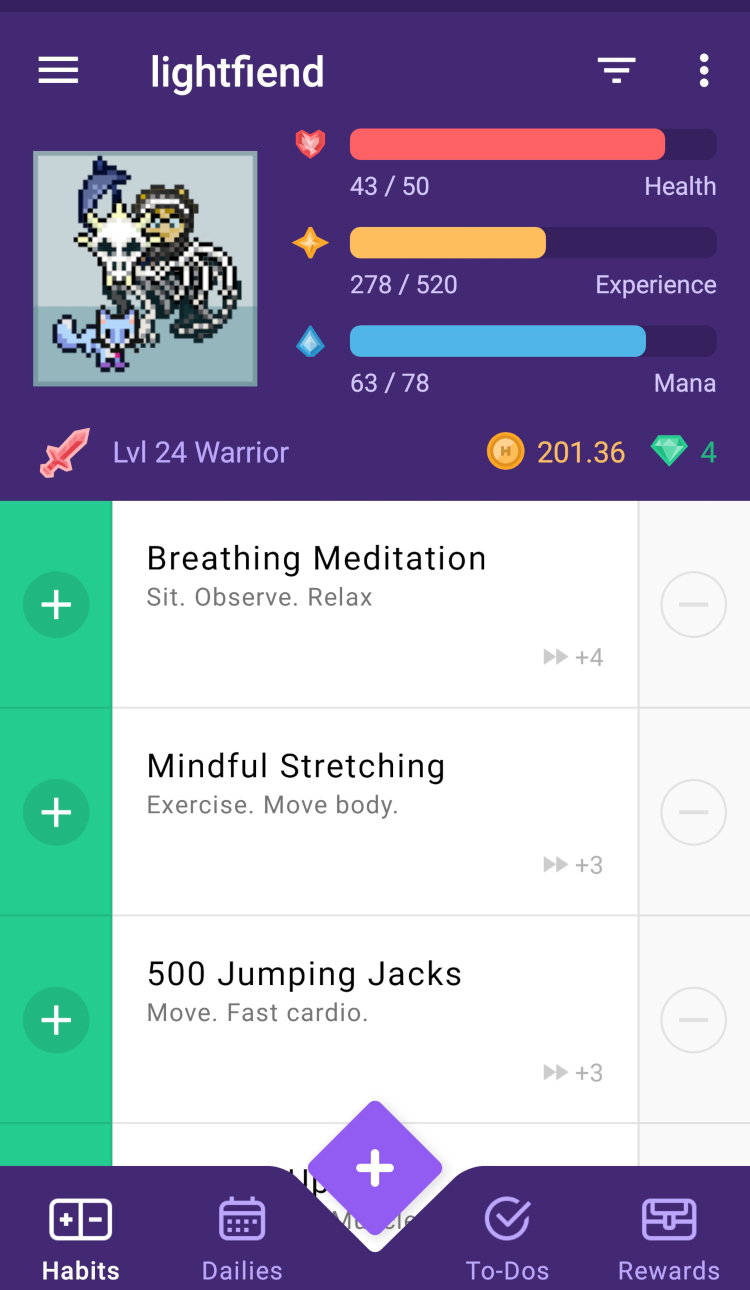
Gamification is the process of using “gaming elements” in non-gaming situations to increase our motivation and engagement. Here’s how to apply it to your self-improvement!
Gamification is the process of using “gaming elements” in non-gaming situations. The basic idea is that by making an activity seem more like a “game,” individuals will be more motivated and focused to continue that activity and stay committed to it.
One of the most common examples of this is when businesses use rewards and badges for customers who have been loyal to their company. The more products you buy, the more you work your way to different “reward tiers,” or “earn badges,” similar to how you move from level to level in a video game. By doing this, businesses keep their customers more committed to their brand.
Another common example of gamification is through many health and fitness apps, which often track your progress, record high scores, share your progress with others, and reward badges once you reach a certain amount of exercise or improvement in your diet. These apps are designed to keep you focused and committed to your health goals.
However, my favorite example of gamification in the context of self improvement is the mobile app Habitica (formerly known as “Habit RPG”), which I’ve been using for the past few months and highly recommend (it’s completely free to use).
Basically, Habitica is a motivation app with an RPG (role-playing game) twist. You complete an activity in the real world, and then you receive virtual points that you can use to get through the game, improve your character, damage bosses, and achieve certain goals.
There’s not much actual gameplay, but you can customize your character, collect items (such as weapons, pets, and gear), choose a class that has special abilities (“Warrior,” “Rogue,” “Mage,” “Healer,”), improve certain skills that help different aspects of the game (such as “Strength,” “Perception,” “Intelligence” and “Constitution”), and play quests that often involve finding items or fighting a boss.
You can even join a “Party” with others and complete quests together, which adds a nice social component to it.
Here’s a screenshot of my character:

As you can see in the top corner, I’m riding a “Skeleton Dragon” and I have a cute “Blue Cotton Candy Fox” with me. Plus a sweet “Scythe” weapon. Cool stuff, right?
You’ll also notice some of the “Habits” I have listed at the bottom. I currently have 17 habits I’m working on through Habitica, including “Breathing Meditation,” “Mindful Stretching,” “Write Article,” “1 Hour of Making Music,” and even simple things like “Drink 3 Glasses of Water” and “Do One Nice Thing for Someone.” I also use the “To-Do” list frequently for chores such as “Give Dog a Bath,” “Clean Bathroom,” or “Get Oil Changed in Car.”
You can also set up negative “Habits” that will do damage to your character every time you do them.
It may seem a bit silly and trivial at first, but gamification can often keep you motivated in fun and interesting ways. For example, I sometimes find myself thinking “I really need to meditate today so I can do more damage to that boss.” It seems stupid, but it works!
Of course, the ultimate goal is to do these habits and improve yourself in the real world. But “gamification” can often give you some nice external motivation that can make the self improvement process a whole lot easier, especially when trying to build new habits or get rid of old ones.
(One last note on Habitica: It’s a very easy app to start using, but it’s deep enough to keep your interest and attention. I recommend saving the Habitica Wiki and Habitica Reddit as resources if you have any questions along the way).
The Psychology Of Gamification
Gamification has shown to be effective in a wide variety of contexts for both individuals and groups, including marketing, health, education, politics, activism, and self improvement.
One of the best books on gamification is Actionable Gamification: Beyond Points, Badges, and Leaderboards by Yu-kai Chou, which provides a comprehensive framework on all the ways we can gamify different areas of our lives. Another excellent book to check out is Reality Is Broken: Why Games Make Us Better and How They Can Change the World by Jane McGonigal, which explains what makes games so powerful and captivating to us as humans, and how we can channel this to make the world a better place.
Here are a few essential ways “gamification” can motivate you:
- Boost Rewards – Gamification helps you boost the “reward” aspect of your habit loops (cue → routine → reward), by giving you an extra prize for completing a good habit (even if it’s something as simple as a new item in a video game or defeating a boss).
- Virtual Progress – Gamification creates a sense of “virtual progress,” so you get a stronger feeling of moving forward when you see yourself leveling up, completing quests, and improving on your character. In psychology, this is known as a type of nudge, a common tool for influencing choices and behaviors.
- Increased Engagement – Gamification leads to “increased engagement” and focus because it creates a more interactive experience, especially if there is a story and mission behind the game (and/or a social component to it). There’s a reason games can become so addictive and engaging in general, so by treating your life as a video game you can often tap into extra mental resources and motivation.
These are the key ways gamification can motivate us to make better decisions and improve ourselves.
While gamification is a form of “extrinsic motivation,” it can be a very powerful tool for making it easier to change habits and keep ourselves motivated. “Intrinsic motivation” and “extrinsic motivation” don’t need to be mutually exclusive. Take advantage of both to maximize your motivation.
So far I’ve been using Habitica for a couple months and I’ve already noticed a significant uptick in certain positive habits (like meditation and exercise). I recommend trying it out for yourself and seeing if it works for you!
Enter your email to stay updated on new articles in self improvement:
